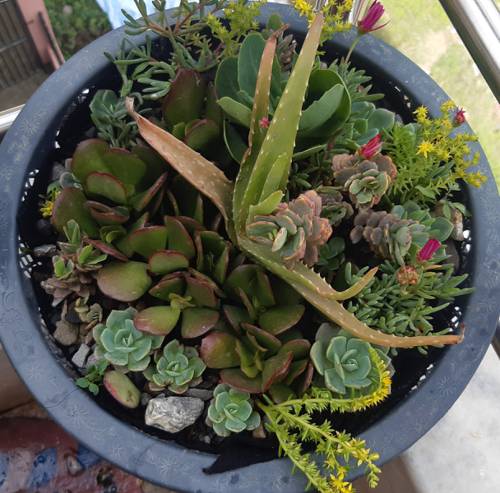
FAQ About Indoor Plant Genealogies and Origins

What are indoor plant genealogies?
Indoor plant genealogies refer to the historical development and lineage of indoor plants. This includes their evolutionary history, the geographical origins of different species, and how they have been cultivated and hybridized over time to adapt to indoor environments.

How do indoor plants evolve from their native habitats?
Indoor plants evolve from their native habitats through a process of adaptation and selective breeding. Initially, these plants grow in specific natural conditions that suit them, such as tropical rainforests or deserts. Cultivators select species that display favorable traits for indoor settings, like low light tolerance or compact size, and propagate them to enhance these traits.

Why are tropical plants popular as indoor plants?
Tropical plants are popular as indoor plants because they thrive in warm, humid environments similar to conditions found in many homes. Additionally, many tropical species have vibrant foliage and flowers, making them attractive as decorative indoor companions. Their ability to adapt to relatively low light conditions also makes them suitable for indoor cultivation.

What are some common misconceptions about the origins of indoor plants?
A common misconception about indoor plants is that they originate as indoor species. In reality, almost all indoor plants have wild ancestors rooted in outdoor ecosystems, from which they have been adapted over time through domestication and breeding techniques to survive and flourish indoors.

How have houseplants been adapted for indoor living?
Houseplants have been adapted for indoor living through selective breeding and cultivation. Plant breeders focus on traits that help the plants survive in indoor conditions, such as tolerance to low light, reduced need for water, and slower growth rates. These adaptations are achieved over generations of plant propagation and hybridization.

What are some examples of indoor plants and their native habitats?
Some examples of indoor plants and their native habitats include the Monstera, which originates from tropical Central America rainforests, and the Snake Plant, native to West Africa's arid regions. The Peace Lily, popular for its elegant white flowers, traces its origins to the rainforests of South America.

What role does hybridization play in indoor plant cultivation?
Hybridization plays a crucial role in indoor plant cultivation as it allows breeders to combine traits from different species to produce plants that are better suited to indoor environments. This process can enhance desired qualities such as leaf color, bloom frequency, and environmental resilience, leading to more robust indoor plants.

Are all indoor plants genetically modified for indoor growth?
Not all indoor plants are genetically modified in the laboratory sense, but many have been selectively bred over time to enhance traits that suit indoor environments. This traditional breeding focuses on characteristics like compactness, color, or drought tolerance, rather than modern genetic engineering techniques.

Why are some indoor plants easier to care for than others?
Certain indoor plants are easier to care for due to their genetic tolerance for low light and moisture levels typical of indoor environments. Species like the Pothos and Spider Plant are naturally resilient and require minimal maintenance, making them ideal for indoor cultivation.

What factors influence the selection of plants for indoor environments?
Factors that influence the selection of plants for indoor environments include the plant’s light, moisture, and temperature requirements, as well as its size and growth habit. Aesthetic appeal and the ability to purify indoor air are also important considerations for selecting indoor species.

How do native habitats affect the care needed for indoor plants?
The native habitat of an indoor plant greatly affects its care needs, as these requirements reflect the conditions it thrived in originally. For instance, plants from rainforest regions typically need more humidity and less direct sunlight, while succulents from arid areas may require more sunlight and less frequent watering.

What is the historical significance of cultivating indoor plants?
The historical significance of cultivating indoor plants dates back to ancient civilizations such as the Egyptians and Romans, who used plants for decoration and medicinal purposes. The modern practice has evolved to include air purification and aesthetics, contributing to the quality and ambiance of indoor living spaces.

Which indoor plant species have the oldest cultivation history?
Some indoor plant species with the oldest cultivation history include the Ficus, which has been used since ancient times in various cultures around the world, and the Jade Plant, known for its use in Feng Shui and believed to bring good luck.

How have cultural factors influenced the popularity of certain indoor plants?
Cultural factors have significantly influenced the popularity of certain indoor plants, as plants are often chosen for their symbolic meanings, aesthetic appeal, and uses in traditional medicine. For example, the Lucky Bamboo is popular due to its association with good fortune in Feng Shui practices.

What is the role of botanical research in understanding plant origins?
Botanical research plays a key role in understanding plant origins by tracing the genetic lineage and evolutionary history of plant species. It helps elucidate how plants have adapted to various climates and environments, guiding the cultivation and conservation practices in modern horticulture.

How do plant genealogies help in modern plant breeding?
Plant genealogies provide valuable information on the genetic traits and evolutionary adaptations of plant species, which aids breeders in developing new varieties that are more resilient and aesthetically pleasing. Understanding genealogies allows breeders to select correct parent plants for hybridization effectively.

Are there indoor plants that are native to temperate climates?
Yes, there are indoor plants that are native to temperate climates. The Spider Plant and English Ivy are examples of species that have been adapted from temperate regions to thrive indoors. These plants generally require cooler temperatures and moderate humidity, resembling their natural environments.

What are some challenges faced in documenting plant genealogies?
Challenges in documenting plant genealogies include the complexity of genetic data, the vast number of plant species, and the potential for undocumented hybridization events. These factors make definitive lineage tracking difficult, requiring advanced genetic tools and extensive field research.

How does understanding a plant’s genealogy benefit home gardeners?
Understanding a plant’s genealogy benefits home gardeners by providing insights into the plant’s natural habitat, growth habits, and care requirements. This knowledge assists gardeners in replicating optimal conditions for the plant, enhancing growth and minimizing potential issues related to improper care.

What is the impact of indoor plant cultivation on global biodiversity?
The cultivation of indoor plants can have both positive and negative impacts on global biodiversity. While it aids in the preservation of certain endangered species through cultivation, it may also lead to reduced genetic diversity if a small number of hybrids dominate the market.
